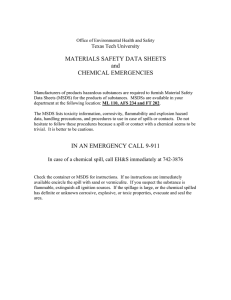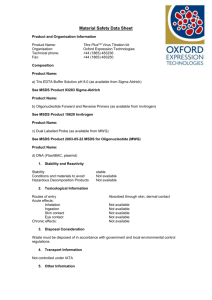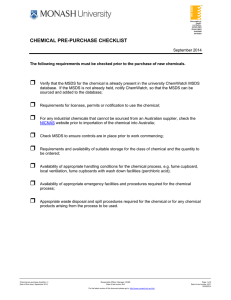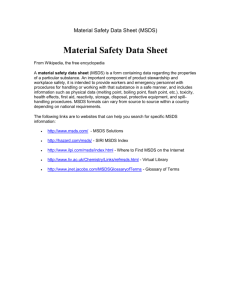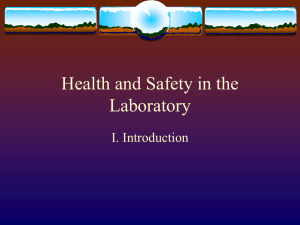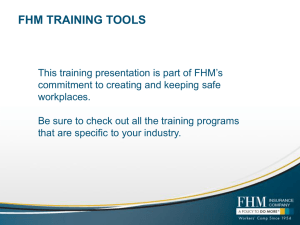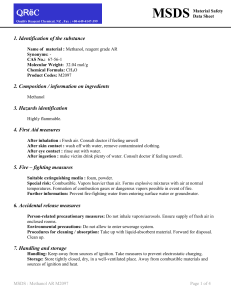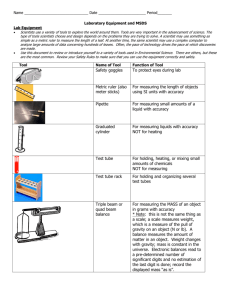Science 8: MSDS Safety Lesson Plan - Isopropyl Alcohol
advertisement
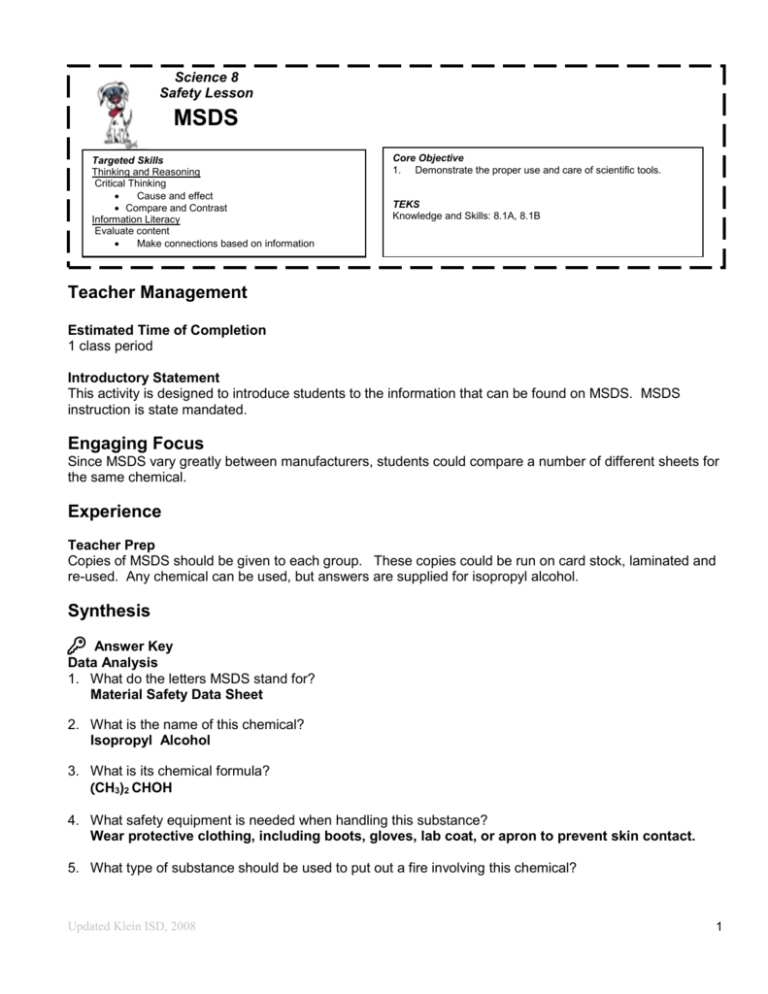
Science 8 Safety Lesson MSDS Targeted Skills Thinking and Reasoning Critical Thinking Cause and effect Compare and Contrast Information Literacy Evaluate content Make connections based on information Core Objective 1. Demonstrate the proper use and care of scientific tools. TEKS Knowledge and Skills: 8.1A, 8.1B Teacher Management Estimated Time of Completion 1 class period Introductory Statement This activity is designed to introduce students to the information that can be found on MSDS. MSDS instruction is state mandated. Engaging Focus Since MSDS vary greatly between manufacturers, students could compare a number of different sheets for the same chemical. Experience Teacher Prep Copies of MSDS should be given to each group. These copies could be run on card stock, laminated and re-used. Any chemical can be used, but answers are supplied for isopropyl alcohol. Synthesis Answer Key Data Analysis 1. What do the letters MSDS stand for? Material Safety Data Sheet 2. What is the name of this chemical? Isopropyl Alcohol 3. What is its chemical formula? (CH3)2 CHOH 4. What safety equipment is needed when handling this substance? Wear protective clothing, including boots, gloves, lab coat, or apron to prevent skin contact. 5. What type of substance should be used to put out a fire involving this chemical? Updated Klein ISD, 2008 1 Water spray, dry chemical, alcohol foam, or carbon dioxide. Water spray may be used to keep fire exposed containers cool, dilute spills to nonflammable mixtures, protect personnel attempting to stop leak and disperse vapors. 6. If a person swallows this substance, what are the procedures that should be followed? Give large amounts of water to drink. Never give anything by mouth to an unconscious person. Get medical attention immediately. 7. Which procedures should be followed if this substance gets on your skin? Immediately flush skin with plenty of water for at least 15 minutes. Call a physician if irritation develops. 8. If this chemical is spilled, what procedure should be followed to clean it up? Ventilate area of leak or spill. Wear protective equipment as specified in Sect. 7. Isolate hazard area. If spill occurs, eliminate all sources of ignition. Keep unnecessary and unprotected personnel from entering. Collect and containerize as much material as possible. Collect liquid in an appropriate container or absorb with an inert material (e.g. vermiculite, dry sand, earth), and place in a chemical waste container. Do not use combustible materials, such as saw dust. Do not flush to sewer! If a leak or spill has not ignited, use water spray to disperse the vapors, to protect personnel attempting to stop leak, and to flush spills away from exposures. 9. What are the potential health effects of splashing this chemical into eyes? Splashes cause severe irritation, possible corneal burns and eye damage. 10. What precautions should be followed when storing this chemical for future use? Protect against physical damage. Store in a cool, dry, well-ventilated location, away from any area where the fire hazard may be acute. Outside or detached storage is preferred. Separate from incompatibles. Containers should be bonded and grounded for transfers to avoid static sparks. Storage and use areas should be No Smoking areas. Use non-sparking type tools and equipment, including explosion proof ventilation. Data Interpretation What is the purpose of an MSDS? Answers will vary but may include: Material safety data sheets provide information on proper use, storage and first aid procedures for each specific chemical used in a science lab. Differentiation Updated Klein ISD, 2008 2
